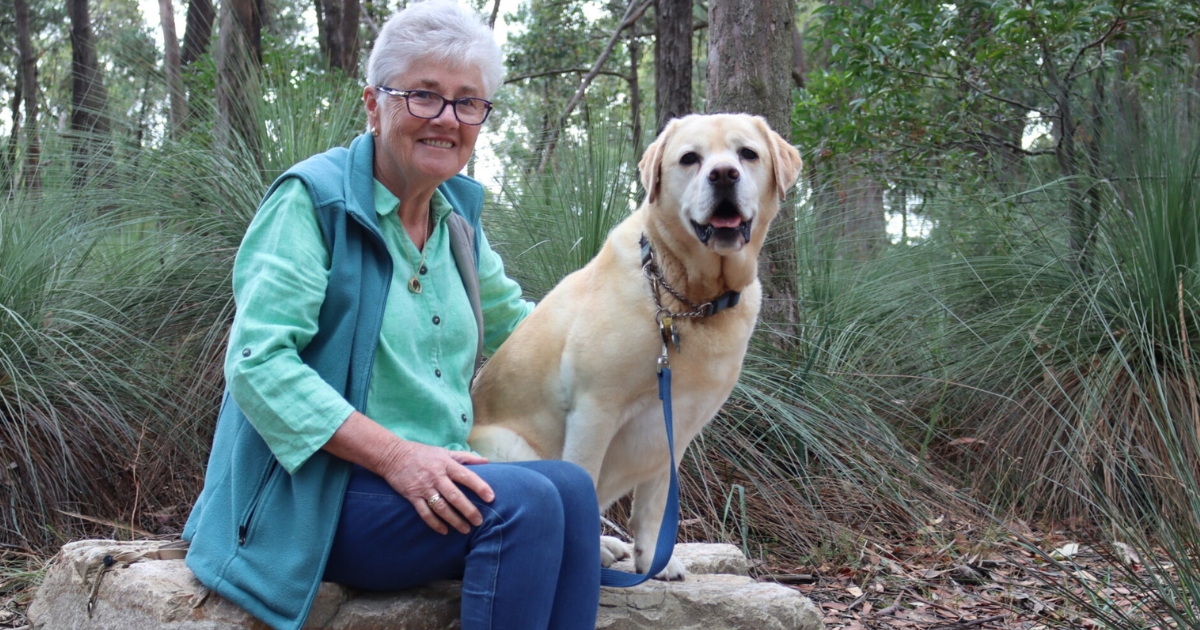Chronic pain at the fore of nationwide campaign

‘A pleasant sensation’: Nadine Curtis hopes to soon have a spinal cord stimulator permanently placed in her epidural space, having trialled the technology for 14 days. Photo: EDWINA WILLIAMS
UNTIL this Sunday, 2 August, the country marks National Pain Week, driven by Chronic Pain Australia.
The seven days are an opportunity for the organisation to raise the profile of chronic pain and the experiences of more than 3.2 million Australians that live with the invisible condition.
Pain classed as chronic lasts a minimum of three months and can potentially stay with a person for a lifetime, following an injury or illness.
Twenty-nine-year-old mother of two, Nadine Curtis has lived with “crippling” chronic pain for five years, initially becoming injured during a bootcamp fitness session.
“I tore my ACL in my right leg, had it reconstructed using my hamstring and experienced some numbness and nerve damage in my shin,” she said.
“In 2018 I slipped in my bathroom, dislocated my knee and ruptured the ACL. I had that reconstructed using a synthetic graft. From the time it was put in, I had pain in the knee, it was swelling, hot and I couldn’t bend it.
“The graft was in the wrong position and too tight. I had a two-stage revision surgery. The graft was pulled out, bone grafting was used to fill in tunnels in the bones, I needed three months to let that heal and then used my patella tendon from that leg to create a new ACL.”
In September of 2019, when Ms Curtis woke up from this second-stage surgery, she was in “horrendous” pain.
“No matter what we threw at it to try and calm the pain down, nothing worked. I saw myself at my worst. I’ve never felt anything like it. It meant I couldn’t follow my rehab protocol, so it was a nightmare,” she said.
Finding a pain specialist in Geelong, Ms Curtis was diagnosed with Complex Regional Pain Syndrome.
Ketamine infusions have lessened her pain at times, along with ongoing allied health treatment including physiotherapy and occupational therapy.
A recent 14-day spinal cord stimulator trial gave her a 70 per cent reduction in pain, and “pleasant sensations,” so she’s looking forward to having her own permanent stimulator put into epidural space.
Ms Curtis couldn’t be more grateful for her allied health team, and values the opportunity to regularly visit a psychologist as she navigates life with chronic pain.
“The stress of having a chronic pain condition is immense, and no two people are the same. You need someone in your corner, you can’t do this alone. To have that support is important,” she said.
“I have a family to raise. They always come first. I can’t keep going into hospital for a week for the high-dose ketamine infusions. Because of COVID, there’s no visitors at the hospital, my kids can’t see me and that’s really tough.”
For Ms Curtis, Australia’s broader awareness of chronic pain has gained some momentum, but she doesn’t think there’s enough understanding, and there’s still stigma.
“I didn’t understand chronic pain until I had it. You can’t see my pain, or friends’ endometriosis pain, and there’s still a mindset that you just suck it up, or it will just go away,” she said.
“It’s a kick to the guts and dismissive of what’s going on. The more we talk, the more resources are out there, and the more awareness is raised, I think more people will come out and ask for help, too.
“It’s not an easy thing to wrap your head around, and it’s not just the wider community that needs help understanding, there’s a lot of medical professionals that put it in the basket of acute pain.”
Visit nationalpainweek.org.au for more information.


















